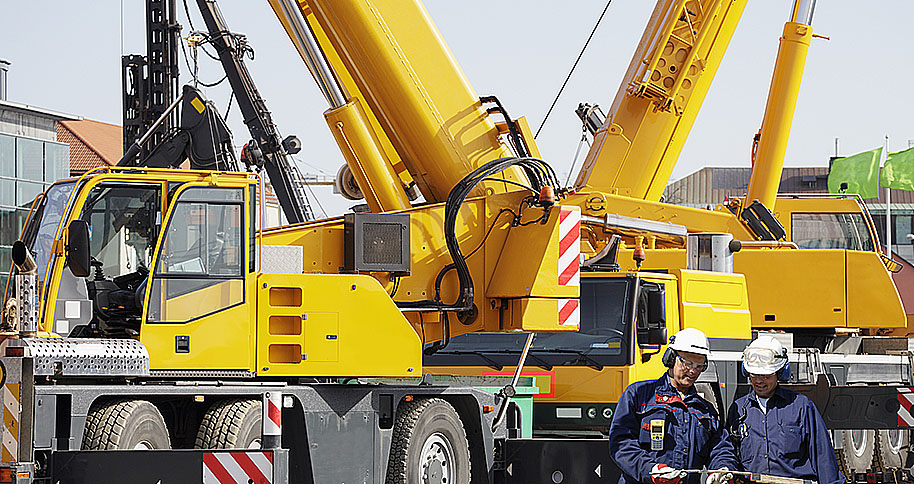In the realm of construction and heavy lifting, crane services play a pivotal role in facilitating various projects, from building skyscrapers to erecting bridges. However, as the construction industry evolves, so too does the need to address environmental considerations in crane and rigging operations. From minimizing carbon emissions to preserving natural habitats, there are several key environmental factors that crane operators and rigging professionals must consider to ensure sustainable practices and minimize ecological impact.
Mitigating Carbon Emissions: Transitioning to Greener Technologies
One of the primary environmental concerns in crane operations is the emission of greenhouse gases, particularly carbon dioxide (CO2), from diesel-powered cranes. To address this issue, crane rental services are increasingly transitioning to greener technologies, such as electric and hybrid cranes, that produce fewer emissions and lower noise pollution. Electric cranes, in particular, offer significant environmental benefits by eliminating on-site emissions and reducing reliance on fossil fuels. By investing in eco-friendly crane technologies, construction companies can mitigate their carbon footprint and contribute to global efforts to combat climate change.
Protecting Air Quality: Implementing Emission Controls and Filters
In addition to transitioning to greener crane technologies, crane operators can take proactive measures to protect air quality and reduce emissions during lifting operations. Implementing emission controls and filters on diesel-powered cranes helps capture harmful pollutants, such as particulate matter and nitrogen oxides, before they are released into the atmosphere. Regular maintenance and inspections of crane engines and exhaust systems are also essential to ensure optimal performance and compliance with environmental regulations. By prioritizing air quality management, crane operators can minimize their impact on local air quality and public health.
Preserving Natural Habitats: Minimizing Disturbance and Habitat Destruction
Crane and rigging operations in environmentally sensitive areas, such as wetlands, forests, and coastal habitats, require careful planning and mitigation measures to minimize disturbance and habitat destruction. Before commencing lifting activities, environmental assessments and surveys should be conducted to identify sensitive ecosystems and species that may be impacted. Specialized rigging techniques, such as helicopter lifting and low-impact cranes, can be employed to minimize ground disturbance and avoid damage to vegetation and wildlife habitats. Additionally, implementing erosion control measures and restoring disturbed areas post-construction helps mitigate the long-term ecological impact of crane operations on natural habitats.
Promoting Sustainable Material Handling: Reducing Waste and Pollution
Sustainable material handling practices are essential for minimizing waste and pollution in crane and rigging operations. By prioritizing the use of recycled and recyclable materials, such as steel beams and aluminum components, crane operators can reduce the demand for virgin resources and minimize the environmental impact of construction projects. Additionally, implementing waste management strategies, such as recycling and proper disposal of construction debris, helps prevent pollution of land and water resources. By promoting sustainable material handling practices, crane rental services can contribute to a circular economy and reduce their ecological footprint.
Setting Standards for Environmental Performance
Green certification and accreditation programs provide crane rental services with the opportunity to demonstrate their commitment to environmental sustainability and differentiate themselves in the market. By obtaining certifications such as LEED (Leadership in Energy and Environmental Design) or ISO 14001 (Environmental Management Systems), crane operators can showcase their adherence to rigorous environmental standards and best practices. These certifications not only enhance the credibility and reputation of crane rental services but also provide assurance to clients and stakeholders that environmental considerations are prioritized in all aspects of crane and rigging operations.
Collaborating with Environmental Organizations: Partnering for Conservation and Restoration
Collaborating with environmental organizations and conservation groups allows crane rental services to actively participate in habitat conservation and restoration efforts. By partnering with local NGOs, government agencies, and community organizations, crane operators can contribute to reforestation projects, wetland restoration initiatives, and wildlife conservation programs. These partnerships not only benefit the environment but also foster positive relationships with local communities and stakeholders. By working together towards common conservation goals, crane rental services VA can make meaningful contributions to environmental protection and enhance the ecological resilience of landscapes.
Investing in Renewable Energy: Harnessing Clean Power for Crane Operations
Investing in renewable energy sources, such as solar and wind power, for crane operations helps reduce reliance on fossil fuels and lower carbon emissions. By installing solar panels or wind turbines on crane yards and storage facilities, crane rental services can generate clean, renewable energy to power their operations. Additionally, incorporating energy-efficient technologies, such as LED lighting and energy management systems, further reduces energy consumption and environmental impact. By embracing renewable energy solutions, crane operators can align their business practices with sustainability goals and contribute to the transition to a low-carbon economy.
Educating and Training Personnel: Building Environmental Awareness and Competence
Educating and training personnel on environmental best practices and regulations is essential for fostering a culture of environmental stewardship within crane rental services. Providing employees with training programs on topics such as pollution prevention, wildlife protection, and sustainable materials management equips them with the knowledge and skills needed to minimize environmental impact in their daily work activities. Additionally, incorporating environmental awareness into safety training programs helps reinforce the importance of environmental considerations in crane and rigging operations. By investing in the education and training of personnel, crane rental services can empower their workforce to make informed decisions that prioritize environmental sustainability.
Managing Water Resources: Preventing Contamination and Runoff
Water contamination and runoff are significant environmental concerns associated with crane and rigging operations, particularly in construction sites located near water bodies or sensitive aquatic ecosystems. To prevent contamination, crane operators must adhere to strict spill prevention and containment protocols when handling hazardous materials, such as fuels, oils, and hydraulic fluids. Implementing secondary containment measures and using biodegradable or non-toxic fluids can help minimize the risk of spills and reduce the environmental impact of crane operations on water resources. Additionally, installing sediment barriers and erosion control measures helps prevent soil erosion and sedimentation in nearby waterways, preserving water quality and aquatic habitats.
Embracing Sustainable Practices: Promoting Environmental Stewardship
As stewards of the environment, crane rental services and rigging professionals have a responsibility to embrace sustainable practices and minimize their ecological footprint. This includes adopting environmentally friendly technologies, implementing pollution prevention measures, and promoting resource conservation throughout all stages of crane and rigging operations. By prioritizing environmental considerations and integrating sustainability into their business practices, crane operators and rigging professionals can contribute to a greener, more sustainable future for the construction industry and the planet as a whole.
Supporting Biodiversity: Enhancing Ecological Resilience
In addition to minimizing environmental impact, crane and rigging operations can also play a role in supporting biodiversity and enhancing ecological resilience. By preserving natural habitats, restoring degraded landscapes, and implementing wildlife-friendly practices, crane operators and rigging professionals can create opportunities for native species to thrive and contribute to the overall health and resilience of ecosystems. Supporting biodiversity not only benefits wildlife but also strengthens the ecological services that natural ecosystems provide, such as pollination, soil fertility, and water purification. By integrating biodiversity conservation into crane and rigging services DC, construction companies can demonstrate their commitment to environmental stewardship and help build a more sustainable future for all.

